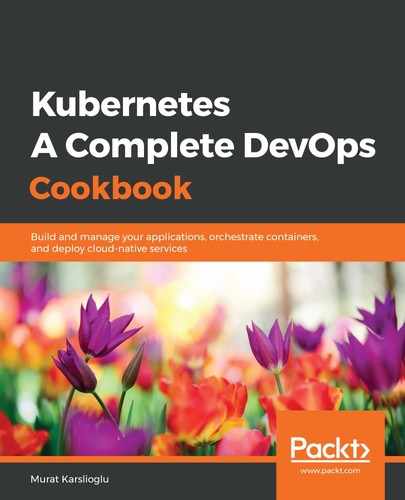Let's perform the following steps to create a deployment with multiple containers and get a shell into running containers:
- In this recipe, we will deploy PostgreSQL on OpenEBS persistent volumes to demonstrate shell access. Change the directory to the example files directory in src/chapter10/postgres, which is where all the YAML manifest for this recipe are stored. Create a ConfigMap with a database name and credentials similar to the following or review them and use the cm-postgres.yaml file:
$ cd postgres
$ cat <<EOF | kubectl apply -f -
apiVersion: v1
kind: ConfigMap
metadata:
name: postgres-config
labels:
app: postgres
data:
POSTGRES_DB: postgresdb
POSTGRES_USER: testuser
POSTGRES_PASSWORD: testpassword123
EOF
- Create the service for postgres:
$ cat <<EOF | kubectl apply -f -
apiVersion: v1
kind: Service
metadata:
name: postgres
labels:
app: postgres
spec:
type: NodePort
ports:
- port: 5432
selector:
app: postgres
EOF
- Review the postgres.yaml file and apply it to create the PostgreSQL StatefulSet. We can use this to deploy the pods and to auto-create the PV/PVC:
$ kubectl apply -f postgres.yaml
- Get the pods with the postgres label:
$ kubectl get pods -l app=postgres
NAME READY STATUS RESTARTS AGE
postgres-0 1/1 Running 0 7m5s
postgres-1 1/1 Running 0 6m58s
- Get a shell into the postgres-0 container:
$ kubectl exec -it postgres-0 -- /bin/bash
The preceding command will get you shell access to the running container.
